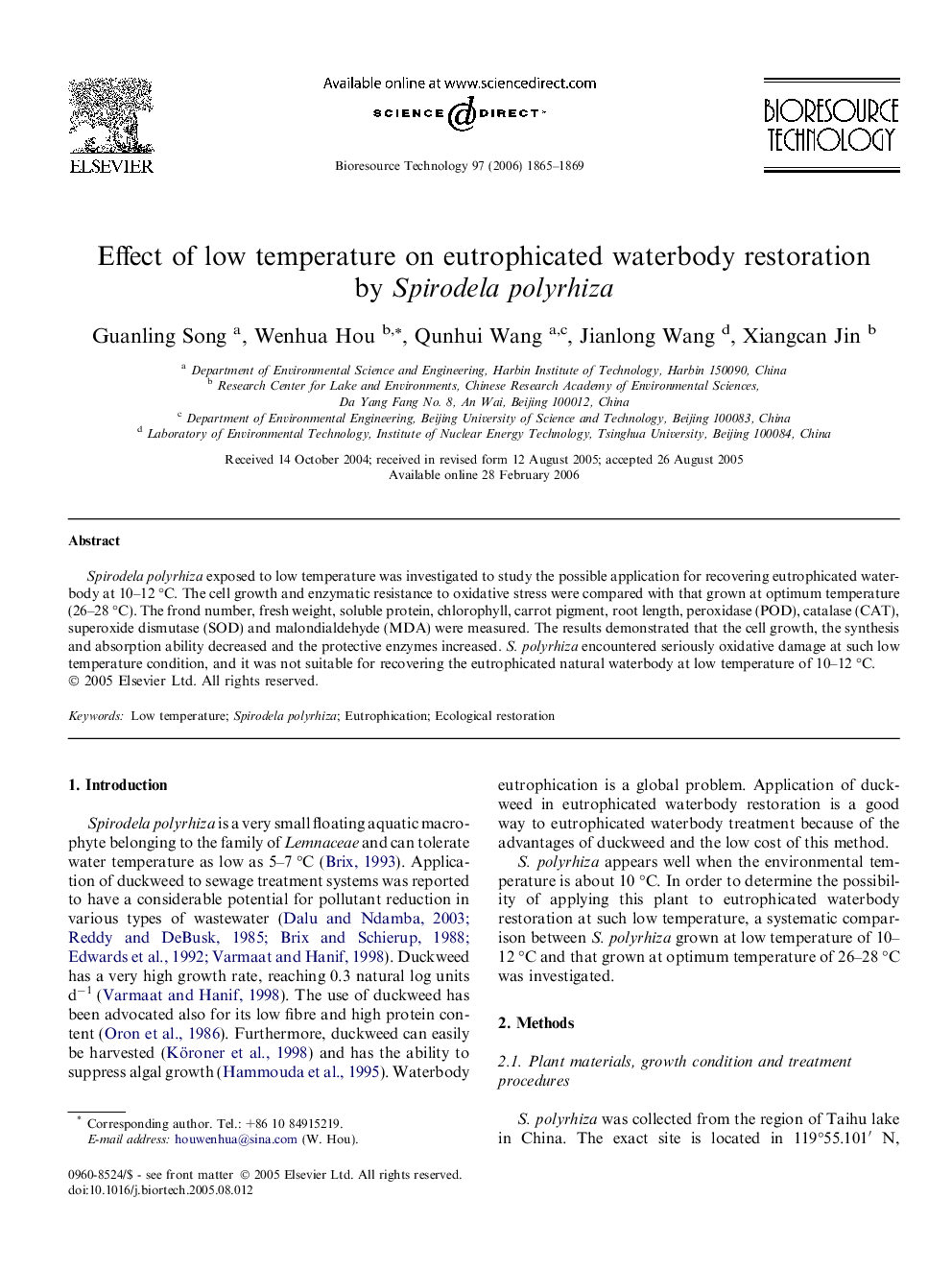| Article ID | Journal | Published Year | Pages | File Type |
|---|---|---|---|---|
| 685453 | Bioresource Technology | 2006 | 5 Pages |
Spirodela polyrhiza exposed to low temperature was investigated to study the possible application for recovering eutrophicated waterbody at 10–12 °C. The cell growth and enzymatic resistance to oxidative stress were compared with that grown at optimum temperature (26–28 °C). The frond number, fresh weight, soluble protein, chlorophyll, carrot pigment, root length, peroxidase (POD), catalase (CAT), superoxide dismutase (SOD) and malondialdehyde (MDA) were measured. The results demonstrated that the cell growth, the synthesis and absorption ability decreased and the protective enzymes increased. S. polyrhiza encountered seriously oxidative damage at such low temperature condition, and it was not suitable for recovering the eutrophicated natural waterbody at low temperature of 10–12 °C.
